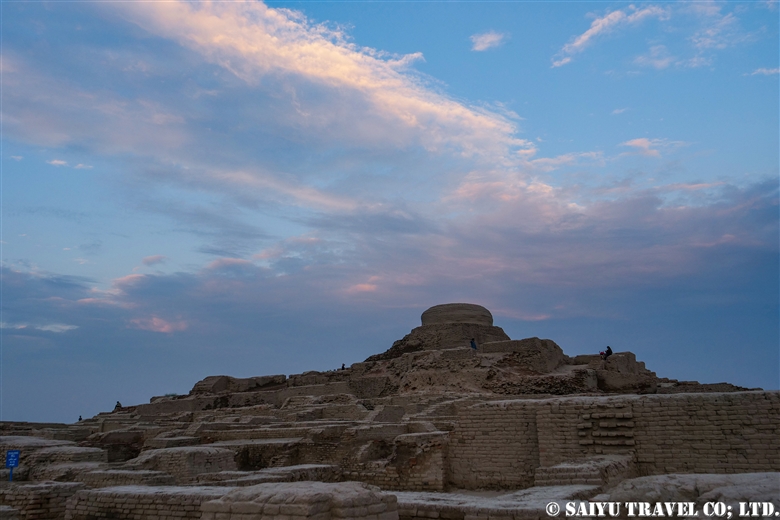
This is the ruins of the Indus Valley Civilization, the city of Mohenjo-daro (also Moenjodaro).
It is the site of the largest urban archeological settlement, with its most active period between 2500 to 1800 BC. It is believed that up to 40,000 people inhabited this area, in the east is a fortified section (There is a Gandhara stupa, Ritual bath believed to have been used for religious ceremonies, bathing or purifying, and for political gatherings) and divided on the western side (there were houses for the nobles, shops and commoners homes also). So far, only 10 percent of the area has been excavated, and scattered all around are unexcavated mounds.
Meaning “Mound of the Dead people” in Sindhi the local language, back in the old days, this burial place was a site that locals were afraid to come close. In 1921 an Indian archeologist excavated the site calling it the “2nd and 3rd Century Gandhara” but upon exploring it, they had uncovered a city ruins of the Indus Valley Civilization, much older than they thought.
Extensive excavations were carried out by the Archeological Survey of India (A.S.I) during the British India period until 1947. In 1980 it was designated a World Heritage Site. It is still unclear what might have caused the decline of the city. During the survey, a seal was discovered, but because the text of the Indus script that is engraved on the seal has not been deciphered yet, the true name of the town is unknown.
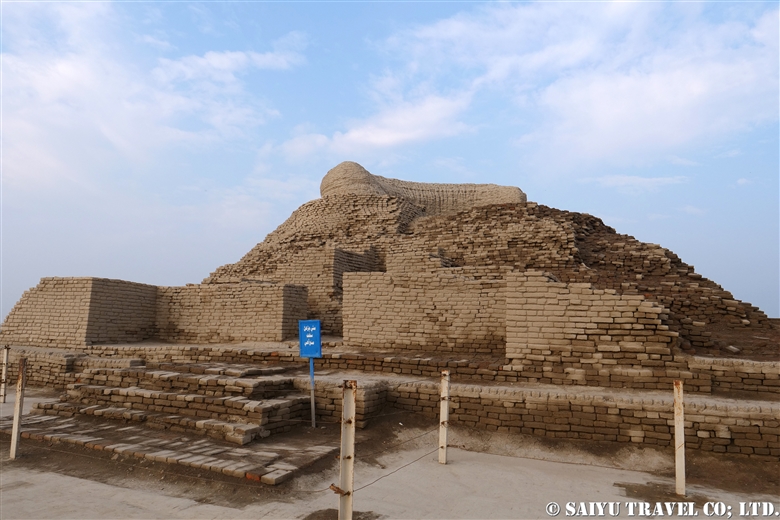
This Mohenjodaro SD Area’s Gandhara Stupa, which dates back to 2nd or 3rd Century AD. There is a monastery surrounding the area which is built using bricks from the Indus Valley Civilization.
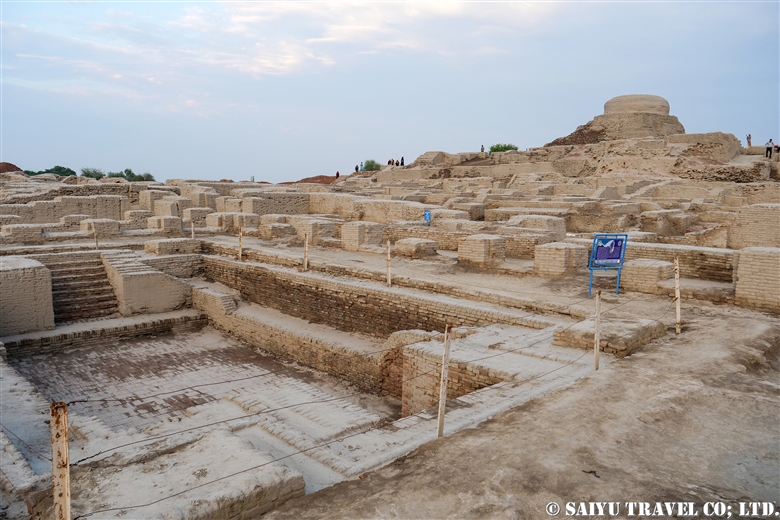
The famous “Great bath” area is 12m x 7m and 2.5m deep, and there are remain of waterproofing on the elaborate wall made of bricks. It is said that some religious ceremony was held here. The stepped ghats (terraces) descending to the surface of the water are supposed to lead to Hindu features later.
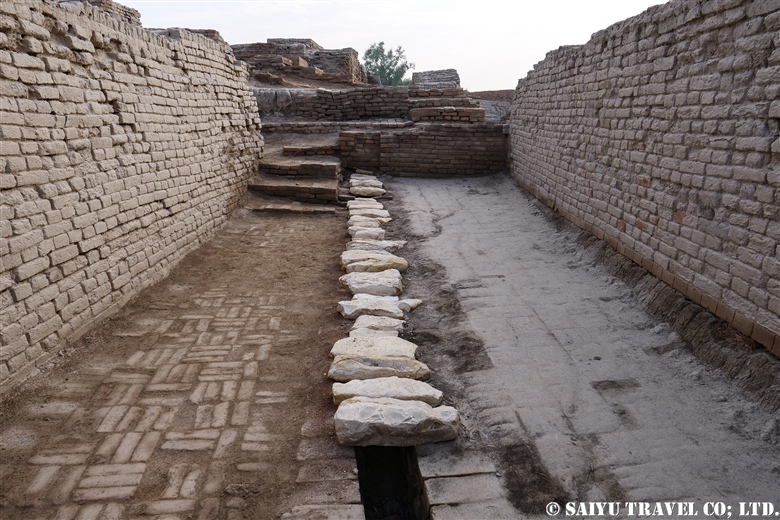
A sewage system in the SD Area. It is covered with limestone rocks. Some of the DK area is built entirely underground.
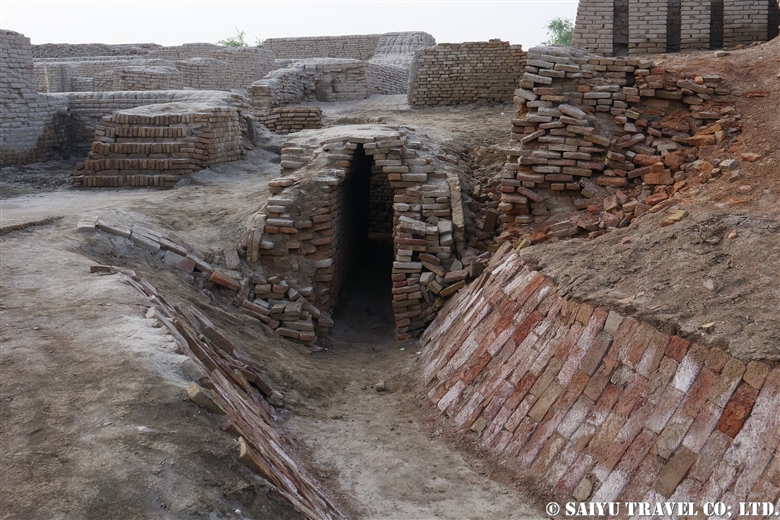
This is also the sewage system in the SD area. Water from the Great Bath and other dwellings are directed through this channel to the Indus river. During that time, the Indus River ran very close to the town of Mohenjo-daro.
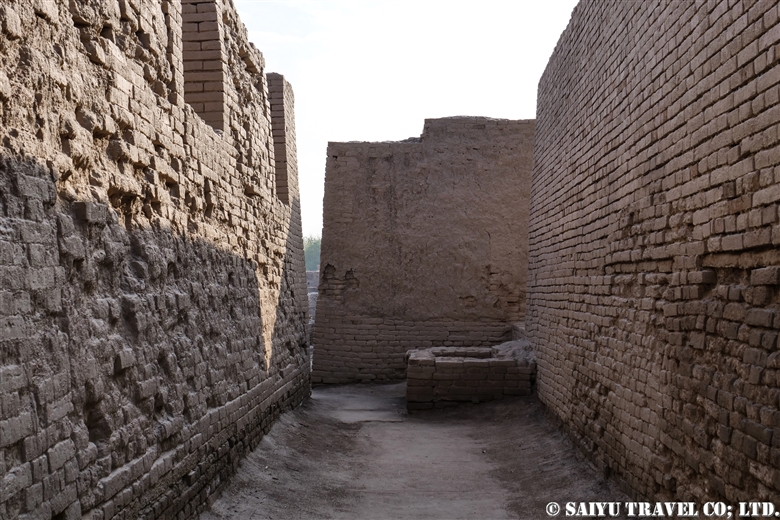
In the corner of this DK area home, is a “Rubbish Bin.” Similar efforts for “Trash collection” areas are also seen in the SD areas as well. Unfortunately, this concept of managing their garbage wasn’t carried into modern pakistan.
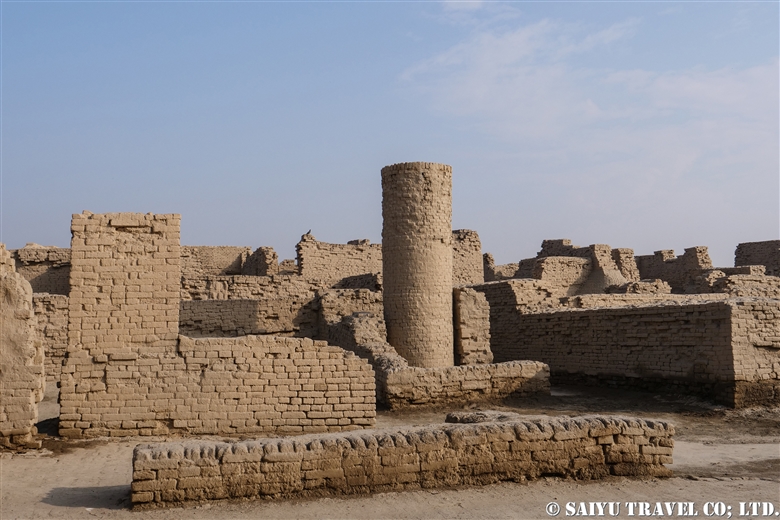
In the Urban DK area, an aristocratic house was a two story building, with access to the well even from the second floor.
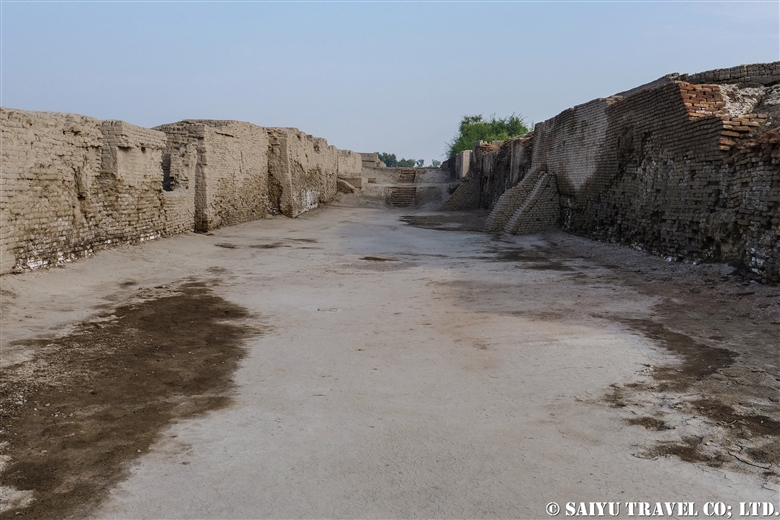
“The Old Street” as it is called is the Main Street. On both sides it was lined with shops.
Recently, many domestic tourists of Pakistan have increased in visiting this site. Particularly at sunset, you will see many people.
Unfortunately, the time I visited Mohenjo-daro it was too cloudy to catch a good sunset. But my personal recommendation is to visit early in the morning, when you can enjoy “the deserted city of Mohenjo-daro.” without other tourists.
Photo & Text: Mariko SAWADA
Visit: Feb 2020, Nov 2019, Mohenjo-daro, Sindh
*For inquiries and consultation, please go to Indus Caravan
*Please follow us on Youtube, Instagram & Facebook
Category : - Mohenjodaro > - Monument / Heritage of Sindh > ◆ Sindh > ◇ Heritage of PakistanTag : Mohenjodaro , Pakistan Blog , Indus Civilization , Pakistan Travel Blog , Indus Ruin , Sindh , Unesco World Heritage Pakistan , Indus Caravan , Mohenjo-daro , Saiyu Travel , Pakistan Travel company , Saiyu Travel Pakistan , Pakistan tour operator , Pakistan Photography Tour , Moenjodaro





